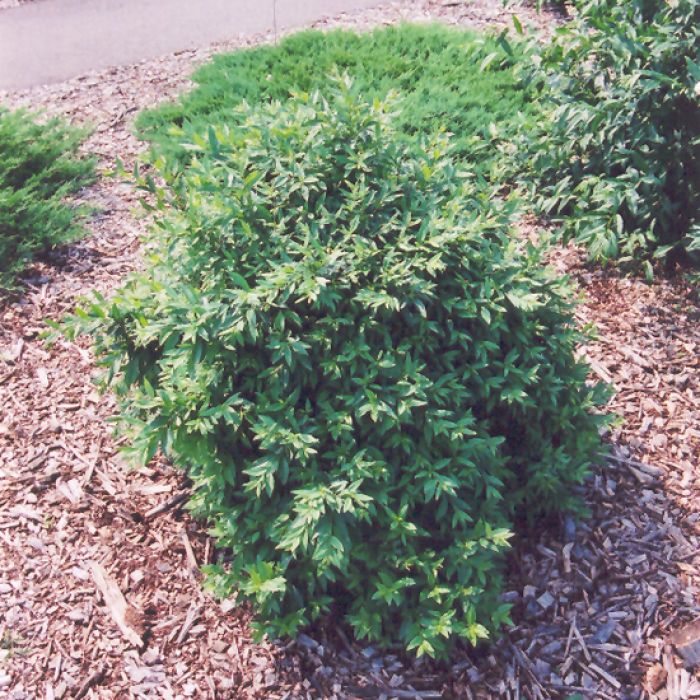Ligustrum, Privet 'Lodense'




- Sun Preference
- Full-Sun, Part-Sun
Description
A compact shrub for use in low hedges, takes pruning exceptionally well; densely branched, interesting flowers (if not pruned) followed by black berries in fall; easy to grow, handles polluted city conditions well.
Minnesota's Largest Selection of Shrubs
Elevate your landscaping with Gertens' unmatched variety of shrubs! Selecting the right shrubs for your backyard can enhance its beauty and functionality. Consider factors like sunlight, soil type, and mature size when choosing shrubs. For sunny areas, flowering shrubs like roses or hydrangeas can add color and charm. In shady spots, opt for shrubs like azaleas or hostas. Evergreen shrubs provide year-round interest and privacy, while deciduous shrubs offer seasonal color changes. At Gertens, we offer a wide selection of shrubs to suit every backyard need.
Details
Height: 4 feet
Spread: 4 feet
Sunlight: ![]()
![]()
Hardiness Zone: 4b
Other Names: European Privet
Description:
A compact shrub for use in low hedges, takes pruning exceptionally well; densely branched, interesting flowers (if not pruned) followed by black berries in fall; easy to grow, handles polluted city conditions well
Ornamental Features
Lodense Common Privet has panicles of lightly-scented white flowers hanging below the branches from late spring to early summer. It has dark green foliage throughout the season. The glossy narrow leaves do not develop any appreciable fall color. The fruit is not ornamentally significant.
Landscape Attributes
Lodense Common Privet is a dense multi-stemmed deciduous shrub with a more or less rounded form. Its relatively fine texture sets it apart from other landscape plants with less refined foliage.
This shrub will require occasional maintenance and upkeep, and can be pruned at anytime. Gardeners should be aware of the following characteristic(s) that may warrant special consideration;
- Disease
Lodense Common Privet is recommended for the following landscape applications;
- Hedges/Screening
Planting & Growing
Lodense Common Privet will grow to be about 4 feet tall at maturity, with a spread of 4 feet. It tends to fill out right to the ground and therefore doesn't necessarily require facer plants in front. It grows at a fast rate, and under ideal conditions can be expected to live for approximately 30 years.
This shrub does best in full sun to partial shade. It is very adaptable to both dry and moist locations, and should do just fine under average home landscape conditions. It is not particular as to soil type or pH, and is able to handle environmental salt. It is highly tolerant of urban pollution and will even thrive in inner city environments. This is a selected variety of a species not originally from North America.
| SKU | Container Size |
| S1811.5 | #2 Container (2 Gallon) |
* Not all container sizes may be available at this time. See store for details on specific container size availability.
More Information
| Gerten Grown Plants | Gerten Grown Plants |
|---|---|
| Available for Pre-Order | Yes |
| Sun Preference | Full-Sun, Part-Sun |
| Mature Height (Range) | 2 - 5 feet |
| USDA Hardiness Zone | 4 |
| Common Family Name | Privet |


